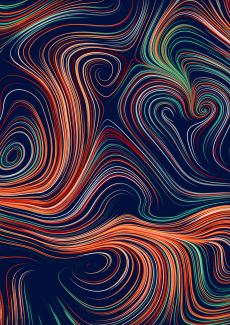Summary:
The top-hat transform has been introduced 35 years ago as a tool for detecting nuclei in cytological samples [1]. It is defined as the residue of an opening or a closing. Openings and closings are increasing and idempotent operators. Openings are in addition anti-extensive, suppress bright details, recovered in the residue obtained by subtracting from an image its opening. By duality, dark details are detected by subtracting an image from its closing.
The closings considered here may be observed every time a topographic surface is flooded and lakes created. The flooded surface is a closing of the dry surface. Subtracting the dry surface from the flooded one produces an upside down image of all lakes over a uniform background. Whereas a flooding fills the wells of a topographic surface, its dual counterpart, called razing, razes the summits. These operators may be considered as reconstruction openings and closings [4], as connected operators [3] or as a sub-family of levelings [2].
The outline of the talk is the following. We present the flooding and classify the lakes they produce in full lakes and regional minima lakes. We derive morphological filter by choosing for each well whether we want it flooded or dry. For segmentation purposes, we select the wells we desire detecting, and produce a tailored flooding filling them with a full lake. The subsequent top-hat extracts them. We illustrate the method both for automatic as for interactive segmentation.
The Centre for Mathematical Morphology (CMM) is a laboratory of "l'Ecole des Mines de Paris - MINES ParisTech" which specialises in image processing. The research work conducted at the CMM is based on mathematical morphology, a theory developed initially by the Centre’s research staff and which today has become essential for numerous image processing applications, The fields of application are varied : multimedia, the sciences of materials, electronics, medicine and industrial control.
References:
[1] F. Meyer. Contrast features extraction. Special Issues of Practical Metallography.
[2] F. Meyer. The levelings. In H. Heijmans and J. Roerdink, editors, Mathematical Morphology and Its Applications to Image Processing, pages 199–207. Kluwer, 1998.
[3] P. Salembier and J. Serra. Flat zones filtering, connected operators and filters by reconstruction. IEEE Transactions on Image Processing, 3(8):1153-1160, August 1995.
[4] L. Vincent. Morphological grayscale reconstruction in image analysis: applications and efficient algorithms. Image Processing, IEEE Transactions on, 2(2):176-201, 1993.

